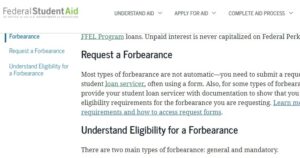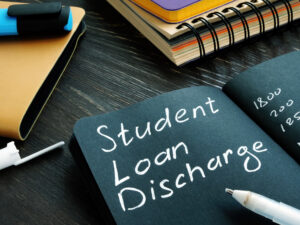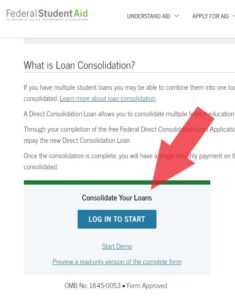Student Loan Relief
When you’re finding it a challenge to keep up with your student loan payments, even if you’re falling farther and farther behind, don’t assume your situation is hopeless.
There are a number of programs and repayment-assistance options that can provide student loan relief for both federal and private student loans. Some programs, like federal consolidation and a Yrefy refinance, can help you even if you’re currently defaulted on your student loans.
To help you sort through your options, we’ll go over some of the most common types of student loan relief and the different kinds of benefits they offer. You should also talk to your lender or student loan servicer to see what other kinds of repayment assistance might be available to you.
- Student loan relief overview
- Income-driven repayment plans
- Forbearance and deferment
- Student loan forgiveness
- Student loan consolidation
- Student loan refinance
- Student loan settlement
Student Loan Relief Overview
Although there are a variety of student loan relief programs, not all programs are available for all loans. The specific kinds of relief available to you will depend largely on what types of student loans you have, who your lenders or servicers are, and whether you’re current or behind on your payments:
| Student Loan Relief Programs | Generally Available For: | |||
| Federal Loans (Not in Default) | Defaulted Federal Loans | Private Loans (Not in Default) | Defaulted Private Loans | |
| Income-Driven Repayment Plans | ✓ | X | With Yrefy refinance programs only | With Yrefy refinance programs only |
| Forbearance & Deferment | ✓ | X | Varies by lender | Varies by lender |
| Student Loan Forgiveness | ✓ | X | X | X |
| Federal Student Loan Consolidation | ✓ | ✓ | X | X |
| Private Student Loan Consolidation | ✓ | X | ✓ | X |
| Student Loan Refinance | ✓ | X | ✓ | X |
| Student Loan Settlement | X | Very limited | ✓ | ✓ |
| Yrefy Refinance | X | X | ✓ | ✓ |
The table above is just a general overview of the most common situations. There can always be exceptions, especially with lenders of private student loans. Every private lender is different, and a lender’s particular student loan relief programs (if it has any) will have their own qualification requirements.
To make sure you know exactly what student loan relief programs are available to you, call your lender or servicer, explain the difficulties you’re having in making your student loan payments, and ask them to go over all your possible relief options.
Income-Driven Repayment Plans
Very simply, an income-driven repayment plan allows you to tailor your monthly student loan payments to your current income. In general, the lower your income, the lower the monthly payment you could obtain.
For Federal Student Loans
The U.S. Department of Education offers four different income-driven repayment plans for qualifying federal student and parent loans.
To enroll in a federal income-driven repayment program, you’ll need to submit an application, as well as certify your income and family size. You’ll need to recertify your income and family size annually in order to remain enrolled.
Your monthly payment amount may fluctuate from year to year, based on any changes to your income or the size of your family. Depending on your circumstances, you may even be able to qualify for $0 monthly payments.
For details on all the federal income-driven repayment plans and how to apply, go to the Department of Education’s website, which we’ve linked here.
For Private Student Loans
 In general, most lenders of private student loans don’t offer income-based repayment plans. (But as with all prospective student loan relief opportunities, you should verify with your lender what kinds of repayment assistance they can extend to you.)
In general, most lenders of private student loans don’t offer income-based repayment plans. (But as with all prospective student loan relief opportunities, you should verify with your lender what kinds of repayment assistance they can extend to you.)
One notable exception is Yrefy’s student loan refinance program. When you enroll in a Yrefy refinance program, Yrefy advisers will work hand in hand with you to customize your repayment plan to your individual financial situation.
Your Yrefy refinance program will take into account your income and your financial circumstances to make sure your monthly payment is reasonable for you and something you can afford.
Forbearance & Deferment
With a student loan forbearance or deferment, you’re granted a period of time during which you’re temporarily allowed to stop making payments or to make smaller payments than what’s normally required, without penalty.
For Federal Student Loans
A number of forbearance and deferment options are available through the Department of Education for qualifying borrowers with eligible federal student or parent loans.
Most federal forbearances and deferments are not automatic. Even if you meet the requirements for a federal student loan forbearance or deferment, you’ll need to submit a request to your student loan servicer, along with any necessary documentation.
 Although forbearances and deferments allow you to temporarily stop your payments, they don’t necessarily stop your student loan interest. During a forbearance or deferment period, your student loans will still be accruing interest, and you could be responsible for paying that interest, depending on what types of federal loans you have and the type of forbearance or deferment you obtained.
Although forbearances and deferments allow you to temporarily stop your payments, they don’t necessarily stop your student loan interest. During a forbearance or deferment period, your student loans will still be accruing interest, and you could be responsible for paying that interest, depending on what types of federal loans you have and the type of forbearance or deferment you obtained.
To learn more about what kinds of federal forbearance and federal deferment are available and how to apply, visit the Department of Education’s website (we’ve linked to the forbearance and deferment pages here).
For Private Student Loans
Whether or not student loan forbearance or deferment is available for your private student loans will depend on your lender.
Many private lenders, for example, offer in-school deferments, which allow you to postpone your student loan payments while you’re still in college or graduate school.
If you’re out of school but undergoing financial difficulties, some private lenders may provide a forbearance option that allows you to temporarily postpone or reduce your student loan payments while you get back on your feet.
Other lenders, however, may not offer any payment-postponement options at all.
Remember, even if your lender does offer forbearance or deferment periods, your private student loans will continue to accrue interest during those postponements, and that interest will be added to your loan amount for you to pay.
The best thing to do, if you find yourself falling behind on your private student loan payments, is to call your lender as soon as possible and explain your financial situation.
Your lender can go through any student loan relief benefits they offer, let you know if a hardship forbearance is a viable option, and work with you to find the best available solution to help you.
Student Loan Forgiveness
In broad terms, student loan forgiveness refers to the cancellation of all or part of your student loan debt.
When a lender “forgives” a portion of your student loans, that portion of your student loans is essentially wiped away. You’ll no longer owe any payments, fees, or interest on student loans that have been forgiven.
Your forgiven student loan debt could still be subject to federal and state taxes, however. The IRS generally regards forgiven debt as income, and any forgiven student loan debts that aren’t exempted could be added to your annual income to be taxed as part of your earnings.
For Federal Student Loans
The Department of Education offers several different forms of student loan forgiveness and student loan cancellation for a range of qualifying factors.
 For example, you may be able to have your outstanding federal student loans forgiven if you work in an approved public service job for a certain amount of time or if you’ve made consistent on-time payments through the entirety of an income-driven repayment plan.
For example, you may be able to have your outstanding federal student loans forgiven if you work in an approved public service job for a certain amount of time or if you’ve made consistent on-time payments through the entirety of an income-driven repayment plan.
The Department also provides for the cancellation (“discharge”) of federal loans in the event of the death or permanent disability of the borrower, or if there were certain irregularities with the school that issued the loans.
You can find out more about what types of student loan forgiveness and cancellation are available for federal student and parent loans on the Department of Education’s website.
For Private Student Loans
The majority of private lenders do not offer student loan forgiveness programs for meeting long-term employment or repayment requirements in the same way the federal government does.
However, some lenders may offer limited discharges (i.e., cancellations) of private student loans for extenuating circumstances — if, for example, the borrower dies or becomes permanently disabled.
To find out what forgiveness opportunities or discharge protections your private student loans carry, if any, you’ll need to review your promissory note, which is the contract you signed when you originally took out your student loan.
Student Loan Consolidation
In a student loan consolidation, one or more student loans are packaged together (“consolidated”) and rolled into a new single loan with a single monthly payment.
Some consolidations will also refinance your student loans by paying off those loans with a new loan that carries new (“refinanced”) repayment terms.
Your new consolidated repayment terms could include a lower interest rate, lower monthly payments, and more time to pay back your loan. But note that a lower interest rate isn’t necessarily guaranteed.
For Federal Student Loans

A federal student loan consolidation can be used to consolidate most types of federal student and parent loans, even if they’re delinquent or defaulted. Private student loans can’t be included in a federal consolidation loan.
Because a federal consolidation will usually extend the amount of time you have to pay back your original loans, your new monthly payment will often be lower than what you were paying before.
Even if your payments are lower, however, it’s important to know that a federal consolidation loan is not reducing your student loan interest rates. With a federal consolidation, the interest rate for your consolidation loan will simply be the weighted average of the existing interest rates for the student loans you’re consolidating.
For Private Student Loans
A private consolidation loan allows you to pay off and consolidate your existing student loans into a new private student loan, often with a lower interest rate and lower monthly payment. Private consolidation can also be referred to as a private student loan refinance.
Unlike federal consolidation, which can only consolidate your federal student loans, some private consolidations will allow you to consolidate both your federal and private student loans together into a single loan.
A private consolidation may be able to reduce the interest rate you’re currently paying on your federal loans. By consolidating federal loans into a private loan, though, be aware that you’ll be giving up the government benefits that come with federal loans, such as access to income-driven repayment plans, student loan forgiveness programs, and federal forbearance and deferment periods.
Consolidating Defaulted Student Loans
One of the biggest benefits of a federal consolidation, if you’re behind on your federal student loan payments, is that it can help you prevent or get out of default by moving your existing federal loans into a new consolidation loan. This new loan won’t be delinquent, and it can frequently provide more affordable repayment options.
If you want to consolidate any defaulted federal student loans, you’ll need to make certain repayment arrangements and ensure that any wage garnishments or court judgments for those loans have been lifted.
A federal consolidation is solely for federal loans and won’t be able to help you with a private student loan default.
At the same time, most private student loan consolidations require strong credit, so you’ll likely find it difficult to obtain a private consolidation for your student loans that are delinquent or in default.
If you have delinquent or defaulted private student loans, you may want to look at programs that specialize in troubled private loans, such as private student loan settlement or a Yrefy student loan refinance.
Student Loan Refinance
In a student loan refinance, your refinance lender provides you with a new loan that pays off one or more of your existing student loans. When you pay off multiple loans, a refinance also acts as a student loan consolidation, consolidating your student loans into a single refinance loan.
Your refinance loan will have new repayment terms that could include a lower interest rate, reduced monthly payments, and either a longer or shorter repayment period.
Most student loan refinancing generally requires that you have strong credit and that your student loans be in good standing. A typical refinance may not be a viable option for you if you have delinquent or defaulted student loans.
For Federal Student Loans
The Department of Education does not provide any refinancing for federal student loans apart from federal student loan consolidations.
However, you may still be able to refinance your federal loans through a private lender that offers refinancing for both federal and private student loans.
A student loan refinance may be able to lower the interest rate you’re currently paying on your federal student loans. But keep in mind that once you’ve refinanced your federal loans into a private refinance loan, your federal loans are no longer federal.
This means that you’ll no longer have access to federal student loan benefits, such as income-driven repayment plans or forgiveness programs, on your refinanced loans.
For Private Student Loans
If you have strong credit and can meet a lender’s other qualification requirements, a student loan refinance can be an excellent way to get a handle on your private student loan debt.
A refinance can pay off multiple existing private student loans, replacing your multiple monthly payments with the convenience of a single consolidated monthly payment. A refinance loan might also be able to lower your interest rate and significantly reduce the amount you have to pay toward your student loans each month.
Note that if you’re currently behind or in default on your private student loans, you may not be able to qualify for a standard student loan refinance.
Instead, you might need to look at other student loan relief options — such as private student loan settlement or Yrefy student loan refinance — that are specifically geared toward distressed private loans.
Student Loan Settlement
Settlement (or “debt settlement”) refers to a type of student loan relief in which negotiations are made with your lender to try to clear your student loan debts for less than what you owe.
Typically, settlement is reserved for student loans that are seriously delinquent or already in default.
In a successful student loan settlement, your lender agrees to accept a partial payment of your remaining student loan balance in lieu of a full payment, in order to consider the loan “settled.”
Once a student loan is settled, you’ll no longer owe any payments on that loan. However, you may still be on the hook for federal and state taxes related to the settlement.
The difference between the amount you originally owed to your lender and the amount you ended up paying in a settlement can be considered as cancelled debt, which the IRS generally regards as taxable income.
For Federal Student Loans
Although government regulations do allow the Department of Education to settle defaulted federal student loans, federal settlements are extremely rare.
The Department of Education is able to compel student loan repayment through recovery avenues such as wage garnishments, tax refund garnishments, and court judgments. As a result, it will only consider settling student loans in unlikely scenarios where it thinks its recovery efforts will add up to less than a settlement.
Since federal student loan settlements are tricky territory, if you’re thinking about attempting one, consider consulting with a licensed professional first. Seek out a lawyer or a financial adviser who has experience dealing specifically with defaulted federal student loans.
For Private Student Loans
While private student loan settlement is more common than federal settlement, it can still be difficult to negotiate.
Obtaining a successful settlement for your private student loans will depend largely on how willing your lender is to negotiate and whether your lender thinks they may be able to recover more money by pursuing collections and/or legal actions against you.
Keep in mind that although it can help you clear out some troubled student loan debts, a standard private student loan settlement also has its drawbacks:
- Large upfront payment
Once a settlement is successfully negotiated, you’ll usually be required to pay the full settlement amount upfront. In a typical settlement, this could mean you’d have to come up with enough money to pay about 40%–50% of your total student loan balance immediately and all at once. - Tax consequences
Don’t forget that the difference between your original debt amount and the amount you end up paying in a settlement can be considered taxable cancelled debt. Come tax time, your cancelled student loan debt could be taxed as part of your annual earnings.
Yrefy Student Loan refinance
A Yrefy student loan refinance is a special relief program designed specifically to help borrowers who are struggling to keep up with their private student loans.
With a Yrefy student loan refinance, you can get out of private student loan default while avoiding the extra taxes that could come with a typical student loan settlement.
Similar to a student loan refinance, a Yrefy pays off your existing private student loans and provides you with a new refinance loan that’s easier for you to repay. A Yrefy loan comes with a low, fixed interest rate and a manageable monthly payment specially custom-tailored to what you can afford.
Unlike most student loan refinance programs, though, a Yrefy has no minimum credit-score requirements, and you can’t be disqualified for being delinquent or defaulted on your private student loans.
If you need help with your private student loans and are looking for an affordable solution, a Yrefy program could be the answer you’re looking for.
To talk to a Yrefy adviser and find out how a student loan refinance might be able to help you, give us a call at (888) 819-9556.




